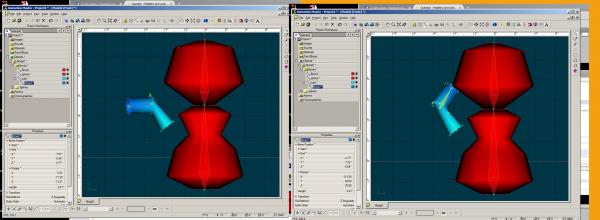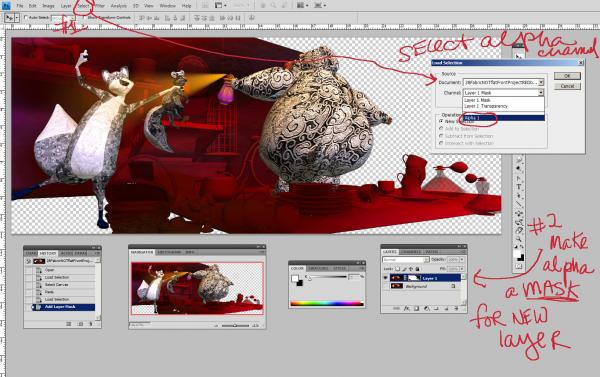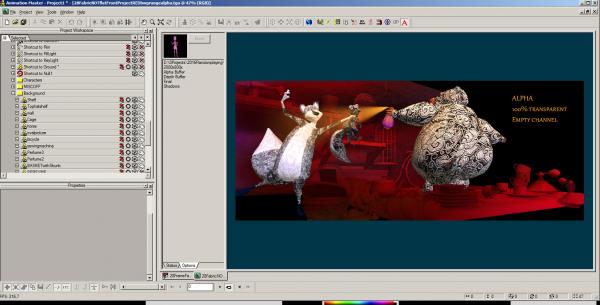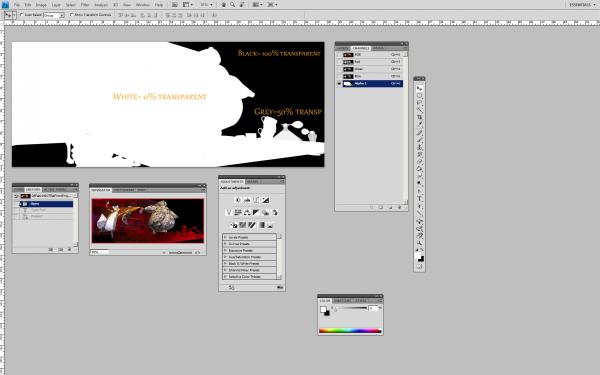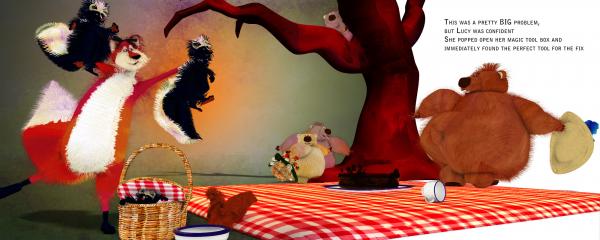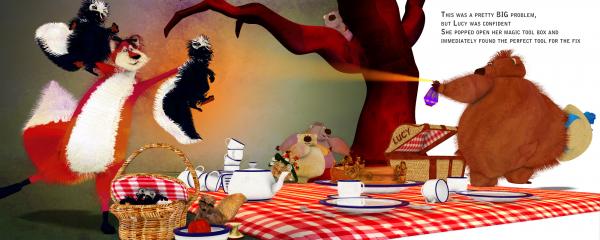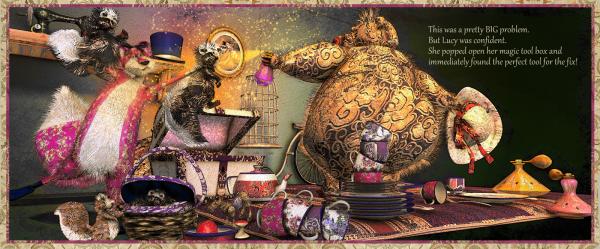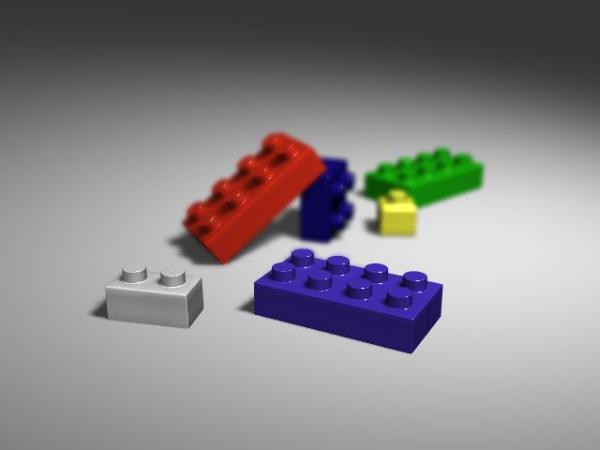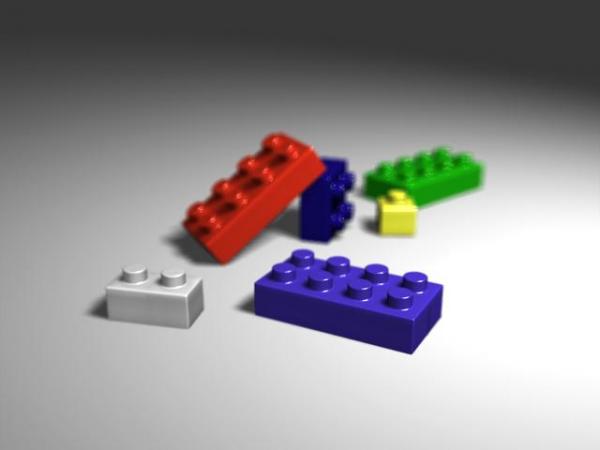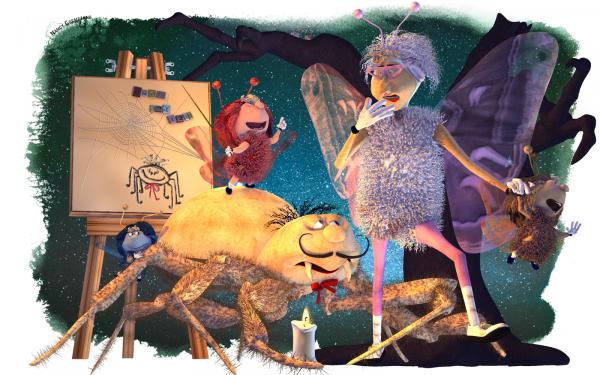-
Posts
7,863 -
Joined
-
Last visited
-
Days Won
15
Content Type
Profiles
Forums
Events
Everything posted by NancyGormezano
-
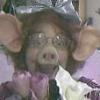
The Saucy Rig (Version 1.5)
NancyGormezano replied to Mechadelphia's topic in Saucy (S.o.S.S.C.) Rig
I haven't tried the saucy rig for a long time...and do not have a model handy to try, but I'm guessing that what these controls are supposed to do (similar to 2008 rig) when they are turned ON, for example is to keep the head oriented the same, eg looking forward or however it is set (when moving the chest). Similarly the chest would stay oriented the same (doesn't change) when moving the pelvis. As for steady pelvis? I dunno.Maybe when moving the feet? Turning those options off, would mean that the head would turn when the chest turns, chest would turn when pelvis turns, pelvis turns when the feet change, I'm guessing. But I have no idea if the saucy rig is doing it correctly. -
Ah yes - now I see what you mean - The cps are still weighted at 50-50, but the rotating in bones mode doesn't take that into account.
-
I am not finding that - I have cps weighted 50-50 tube/bone2 and I rotate bone2 in bones mode and the weighting doesn't change (16b/32 - did not try in 18) It also doesn't change if I rotate tube bone EDIT: just tested in 18p/64 and the weighting still holds
-
I imported a weighted/boned arm into a body model and the arm weights came in - I could also manipulate the arm hierarchy without disturbing weights - so I am not understanding this comment.
-
Ah yes constraints, (smartskins too?) are a different story - but the weights should be available ? The relationships should also come in when importing the "part" model, and yes constraints might have to be reset after. But I agree, doing it in an action that could directly change the model would be nice. But I'm guessing that's a whole other type of "mode" that would have to be indicated (eg like bones, modeling, action, relationship, new mode, etc)
-
Hi Malo I totally understand why this would be a good thing. And I too have always wanted a one-time instant "translate to" , and "orient like" command in modeling/bones mode. I do not like creating and modifying models via export from an action because in the past, many things did not get exported correctly - like hair, decals, etc (not sure this is still problem). However, what I currently do, when I am modifying an existing model to create a new model, or wanting to add geometry (and bones and relationships) from an existing model, is to 1) Import the part model (eg arm) into base model (eg body) 2) go into bones mode and select a bone, and then use the "translate", or "rotate" or scale modifiers with the control key pressed, until the part is in the correct place. Doing it in bones mode will translate, rotate and scale the bone along with the geometry .
-
yay for you!
-
If png works for you - great ! But for your education about using tgas and alpha channels - in PS and/or other editing programs. In order to use the alpha channel generated by A:M, in for eg PHOTOSHOP, you must create a new layer with the same contents as the background (duplicate background), hide the background then 1) select the alpha channel and then on the new layer 2) make the alpha channel a mask for the new layer, to eliminate the background (black). You will see "clear" pixels then you can create new layers, below the masked layer and you can have any other background color or image show thru. Will work just like a png. Except the masked layer will not have deleted any information from the original - the background (in this case black) with still be there, just not be shown. A:M is not having a problem in ver 17. That is how it is supposed to work.
-
Using tga format and alpha channel will allow showing varying degrees of transparency (I think you can do same in png probably?) Rendering tga in A:M will look black coming out of A:M, but when you bring it into PS (or some other editor), and look at the alpha channel under channels, you will see black, white, grey imagery. It's working in A:M in ver 17. I think you probably are not understanding how alpha channel works? 1st image is coming out A:M, 2nd is the resultant tga brought into PS
-
I like the new look of your characters, interesting! But I also found the old ones more endearing and lovable and huggable!
-

April Third Thursday 2016 - Oh Luuuuuuucyyy
NancyGormezano replied to NancyGormezano's topic in Showcase
Thanks Matt, Roger, Steve, David! It would/will be very hard to "win" in these competitions for me. The people entering their work are mostly professional illustrators, who are INCREDIBLY good and amazing. I am at the bottom. My stuff usually gets critiqued as to not clearly showing what is going on in the story. I'm learning that Style is not important. Pretty is not important, for children's book illustration. Having a clear focal point and showing the "story" such that it is instantly and easily understood is #1. Composition #2 Rendering style # 3 (or lower). I'm still at the "i jes wanna make purty pichurs" stage. Probably because I love textures, colors, abstraction, and want people to have some mystery in figuring what the image is about. This is not what children book illustration is about. It/I might be more suited for editorial illustration, and personal art. Usually they choose 1 winner, and as many honorable mentions as they feel like. There are no definite "rules" (they change on a whim) as to winning, and who gets to be critiqued that month. Mostly the benefit to all is that we get to watch the critiques of different entries - including the winner (in a gotomeeting, and then posted later on youtube). As the instructors say, these competitions should be used to create a portfolio in one's own style. I'm just doing this for fun and learning. I have no intention of trying to do this professionally. The entries chosen to be critiqued are not necessarily the best, but are usually chosen so that their critiquing will be helpful to the most people. Ie they make more common mistakes. The winner, and honorable mentions however are personal preferences by the 3 "judges" - Jake Parker, Will Terry, Lee White. Each excellent teachers, artist/illustrators. And after they get done critiquing and making changes, one can see that in most cases they definitely made an improvement to the piece. -

April Third Thursday 2016 - Oh Luuuuuuucyyy
NancyGormezano replied to NancyGormezano's topic in Showcase
Thanks Simon. With these contests - it's not always clear if one should even put the text in (many leave it out), but from what I understand, it's always a good idea to leave space for the text, to be filled in by a "fontographer-typographer" later. However your point is taken. If I 'm going to add the text, then I should do a better job of positioning it, for a more pleasing use of space. And don't get me started about fonts. I suck at choosing a font and am completely ignorant about what would make a font a good choice or appropriate (other than readability). A lot of the others will do hand drawn lettering, always blows me away! -

April Third Thursday 2016 - Oh Luuuuuuucyyy
NancyGormezano replied to NancyGormezano's topic in Showcase
Thanks Rodney. Your critique/feedback is spot-on Yes it is confusing as to which is Lucy. It is supposed to be the bear spraying the skunks. I wasn't even sure that these critters would be recognized as skunks! Nor that the bear looked like a bear! The confusion probably comes from the fact that when I first started doing this, I was working on a composition that had Lucy being the fox/cat/character. (supposed to be a fox, but I think it's not clear that it's a fox in this version, looks more like a cat). I had the story in a different setting - a picnic, where Lucy/fox's weapon was the skunks and she was using them to scare away the bears from her picnic spot. And then I switched to an indoor scenario, making the bear Lucy, who was spraying the skunks. And yes I put the hat in hand to indicate that. And Yes, I too, feel I should have made the bear more feminine looking and showing the face more. Here is a previous version of the picnic scenario - done in a simpler style (Flat shaded with fakeao only) - which I am now liking better. I just don't know when to stop experimenting, adding detail. And again, I probably should have gotten feedback before proceeding and changing course. EDIT: added the transitioning version where I switched, making the bear be Lucy at the picnic, and she is now spraying the skunks -
This month's entry for Society of Visual Storytelling The prompt: "This was a pretty BIG problem. But Lucy was confident. She popped open her magic tool box and immediately found the perfect tool for the fix." Done with A:M with post processing in photoshop and corel painter to add paper texture, sketchy style and stars.
-

Setting default value of On/Off Pose Slider?
NancyGormezano replied to Rodney's topic in Animation:Master
You can - set it in the model/user properties. Then save the model for it to be permanent. -
Adobe has chimed in about quicktime on windows (which they require for their video editing apps eg aftereffects, premiere?). They talk of developing something that would be native for their CC programs. Those of us using pre-CC versions will be out of luck. I too, use QT for stepping thru reference videos that I am analyzing for motion and using as potential rotoscope material. And like Robert, also for combining and compressing any sequence of frames that were generated from A:M. As well as for compressing sound tracks with the video. A:M does not do this well. I do not know of any other player that does it as easily or as cheaply ($29 for QT pro). I suspect we will be safe if we don't download vids from internet sources and view them in QT player. But many times the vids I use for reference have been "captured" from web sites, facebook, etc - so that might be a risk?
-
In some cases it doesn't matter which way the normals are facing. However for some of A:M features to work properly, eg hair, some materials, patch images, rendering of 5 point patches - it is necessary for normals to be facing in right direction, ie not facing inward. For some reason normals get messed up during modeling, and it is a PITA currently to correct them - ie laborious. Gerald is looking for plug in that easily determines what is "inside" versus "outside" and to automatically make the normals point outward.
-

March Third Thursday - Spot illustration
NancyGormezano replied to NancyGormezano's topic in Showcase
Yes I agree - the letters are hard to read, they were bothering me too. I don't know why I didn't change them. I probably should have used a different font as well, and colored them differently to make them more readable. Yes the little critters are new - built on previous models, and the spider is also new, but a modified old model (from TWO? I think). -

Depth buffer DOF? (Fast DOF also discussed)
NancyGormezano replied to Tore's topic in Animation:Master
I still am not understanding what you mean by FAST DOF? Do you mean using the depth buffer in some other program? or using the depth buffer in some other way within A:M to create depth of field effects? I can understand that rendering with MultiPass off doesn't work well for creating "blurring" due to motion, but for me: For creating the depth of field effect of a lens, the rendering looks great with multipass OFF. AND is also very FAST. (No use of depth buffer required, no 2nd step). The only thing set was the focus distance, along with near and far distances. -

Depth buffer DOF? (Fast DOF also discussed)
NancyGormezano replied to Tore's topic in Animation:Master
FAST dof? Hadn't heard of that either! Is Fast DOF = rendering without multipass? When I tried it in ver 16b/32 (frame 0) it took 2 secs with multipass OFF (first image)! and 24 seconds when using 36 passes (2nd image). (Have not tried in ver 18) Not only is it quicker - Multipass OFF looks better to me- -

March Third Thursday - Spot illustration
NancyGormezano replied to NancyGormezano's topic in Showcase
Thanks everyone, I'm so glad that I get to/can use A:M for these monthly contests! I am hoping to do future images that look more painterly/hand drawn and yet still use A:M to do it. Most everyone else who is participating is doing hand drawn 2D (digital and traditional). -
My entry for the March 2016 3rd Thursday for SVS (Society of Visual Storytelling) The prompt was "Haven brought it to "Show and Tell"...even though she never got permission". Had to be a spot illustration. (no hard borders - background transitions to white)
-
And I just know you need another solution (this was done for a rotating candy cane) that uses a decal if you want more stripes on the pole - just increase the cylindrically applied image repeat count to 3 x 5 (or more, instead of the default 3 x1). The image used for the decal can be painted to include multiple colors, just as long as the image is tileable horizontally.









